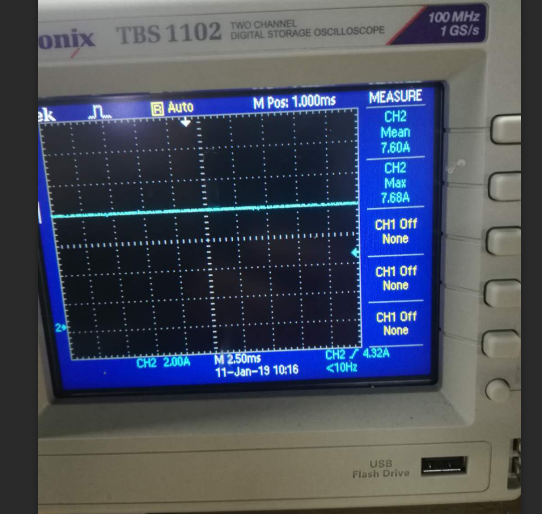Hi, TI expert!
I have been using LM5116MHX to make two BUCK power sources recently. The input voltage is 18-60vdc, and the output voltage is 5V 4A and 12V 3A.Products in the output short circuit test, low and high voltage input voltage point short circuit can be normal burp;A short circuit at the intermediate input voltage point can't burp, and the measured output current is the current limiting point, which will cause the MOS tube and transformer to get hot.I have debugged Cramp, Css, Rs and other parameters, but the effect is not so good. The comparison figure is as follows:
60v input, 12V output 4A, output short circuit waveform as shown below, can normally burp.
55V input, 12V output 4A, output short circuit waveform as shown below, not normal burp.The average current is equal to the overcurrent limiting point current
In order to ensure the full input voltage range, output short circuit when the product works in burp mode, how to debug?



